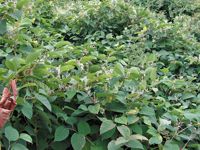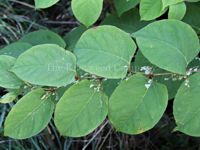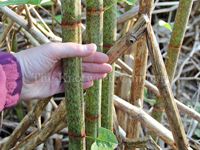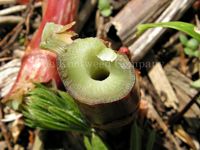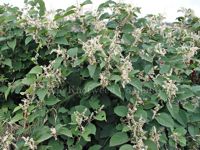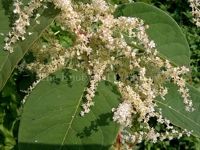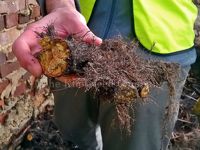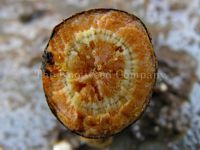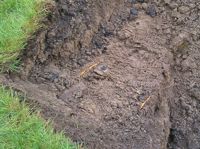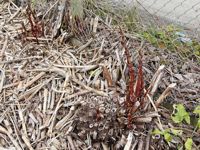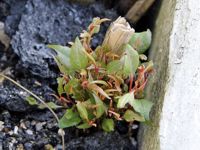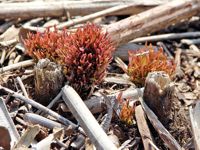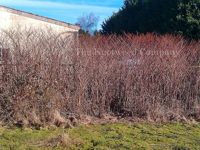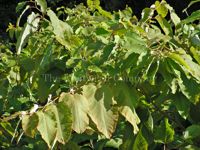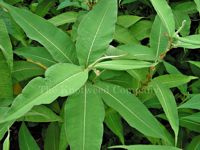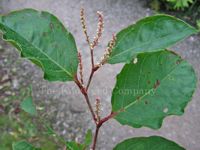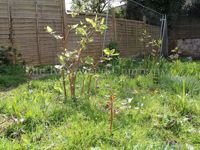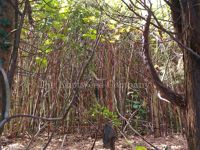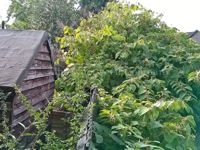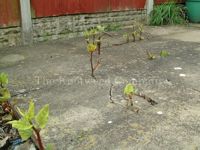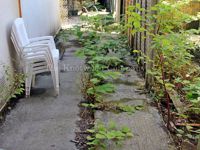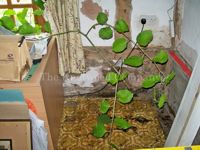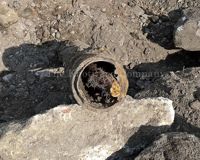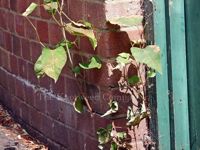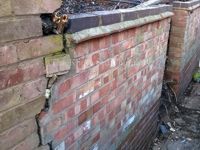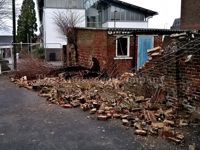Image 1 of 36
A stand of Japanese knotweed

Image 2 of 36
A large mature stand of Japanese knotweed

Image 3 of 36
Japanese knotweed leaves are shield-shaped and grow alternately on the stem

Image 4 of 36
Japanese knotweed stems are green, speckled with pink/purple and segmented like bamboo

Image 5 of 36
An indication of scale of mature Japanese knotweed stems

Image 6 of 36
A cross-section through a hollow knotweed stem

Image 7 of 36
A Japanese knotweed crown

Image 8 of 36
Red emerging buds from crown material at the base of mature knotweed stems

Image 9 of 36
A stand of Japanese knotweed in flower

Image 10 of 36
Japanese knotweed flowers

Image 11 of 36
A section of mature Japanese knotweed rhizome

Image 12 of 36
A cross-section of Japanese knotweed rhizome showing the bright orange colouring

Image 13 of 36
The internal orange colouring makes live knotweed rhizome easy to spot when disturbed

Image 14 of 36
An excavation reveals two sections of Japanese knotweed rhizome

Image 15 of 36
Crowns from a large Japanese knotweed stand showing strong but distorted (‘bonsai’) regrowth

Image 16 of 36
Stunted ‘bonsai’ regrowth of a Japanese knotweed plant

Image 17 of 36
A more extreme form of knotweed ‘bonsai’ regrowth

Image 18 of 36
A mature Japanese knotweed stand during the winter months, showing upright dead stems

Image 19 of 36
Winter brushcut operations on a large Japanese knotweed stand

Image 20 of 36
Giant knotweed

Image 21 of 36
Hybrid (‘bohemica’) knotweed – note significant variation in leaf shape

Image 22 of 36
Himalayan knotweed

Image 23 of 36
Dwarf Japanese knotweed

Image 24 of 36
Leaf size and shape comparison of different knotweeds in the UK

Image 25 of 36
Mature emerging Japanese knotweed stems

Image 26 of 36
Fully grown mature knotweed stand

Image 27 of 36
An uncontrolled Japanese knotweed infestation on a neighbouring property

Image 28 of 36
The inevitable result when mature knotweed is paved over without prior remediation of the knotweed

Image 29 of 36
Mature knotweed has historically been concreted over but continues to emerge around the edges and through cracks

Image 30 of 36
Japanese knotweed emerging through decaying tarmac

Image 31 of 36
Japanese knotweed has found a weakness in a decaying wall and has grown inside a property

Image 32 of 36
A large Japanese knotweed rhizome discovered within a section of drain pipe

Image 33 of 36
Japanese knotweed growing through a poorly-maintained wall

Image 34 of 36
A knotweed crown has grown at the meeting point of two walls and exerted so much pressure over time it has cracked the wall

Image 35 of 36
Knotweed was allowed to grow for many years in a narrow gap between a building and a wall, resulting in the eventual collapse of the weaker structure

Image 36 of 36
Japanese knotweed will not typically create ingress into a building, but it will take advantage of any access points that are created by other means


